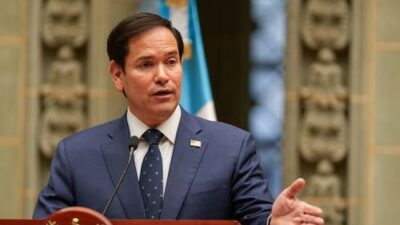On Tuesday, Pakistan’s Finance Minister Muhammad Aurangzeb presented the federal budget for fiscal year 2026, targeting a 4.2% economic growth and a significant rise in tax collection as the nation aims to solidify its recent economic stability. The budget was announced amid opposition demonstrations in the National Assembly and focuses on enhancing financial security and reforming the tax authority.
The government has established a demanding tax collection goal for the Federal Board of Revenue (FBR) at ₹14,131 billion ($49.9 billion), reflecting an 8.95% increase from the prior year’s target. This aligns with Pakistan’s ambition to achieve a tax-to-GDP ratio of 14%, a figure Aurangzeb described as “essential” for reaching national economic targets. The proposed tax-to-GDP ratio for FY26 is set at 12.3%, inclusive of the FBR’s contribution (10.6% of GDP), provincial collections, and the petroleum development levy.
To realize these objectives, the minister proposed transformative reforms for the FBR, such as the introduction of B2B e-voicing, AI-driven audit selection systems for sales and income tax, e-billing, and faceless audits. A new central control unit will also be initiated for centralized data collection. Aurangzeb pointed out early achievements, including the identification of 390,000 high-value non-filers through data integration, leading to a recovery of ₹300 million. He reported a 100% rise in tax filers, generating ₹105 billion in revenues, along with recognition from the IMF of ₹389 billion in revenue due to law enforcement.
While specifics on new tax measures were not entirely disclosed, overarching strategies suggest a movement towards “equity” in taxation, hinting at increased taxes on selected goods and services. There are proposals to raise sales tax rates on a variety of items, and to impose an 18% sales tax on e-commerce and imported solar panels. The government is also evaluating a 2.5% monthly tax on pensions over ₹400,000 per month and a 20% “health tax” on processed foods and beverages. Efforts will also focus on broadening the tax base, potentially taxing agricultural income and extending tax policies to areas previously exempt from taxation.
The total federal budget for fiscal year 2026 amounts to Rs17.573 trillion, which marks a 6.9% reduction from the previous year. Current expenditure is proposed at ₹16,286 billion, reflecting a 5.33% decrease. Interest payments, or debt servicing, continue to be the largest expenditure at ₹8,207 billion, accounting for nearly half of the overall budget. Defence spending has increased by 20.2% to Rs2,550 billion, representing 1.97% of GDP.
The government is pursuing a fiscal deficit of 3.9% of GDP and a primary surplus of 2.4%, with an inflation rate target set at 7.5% for the forthcoming fiscal year. The minister also anticipated significant cash inflows, tax revenues, and royalties from the Reko Diq gold mines, calling it a “game changer” for the nation’s financial landscape.



